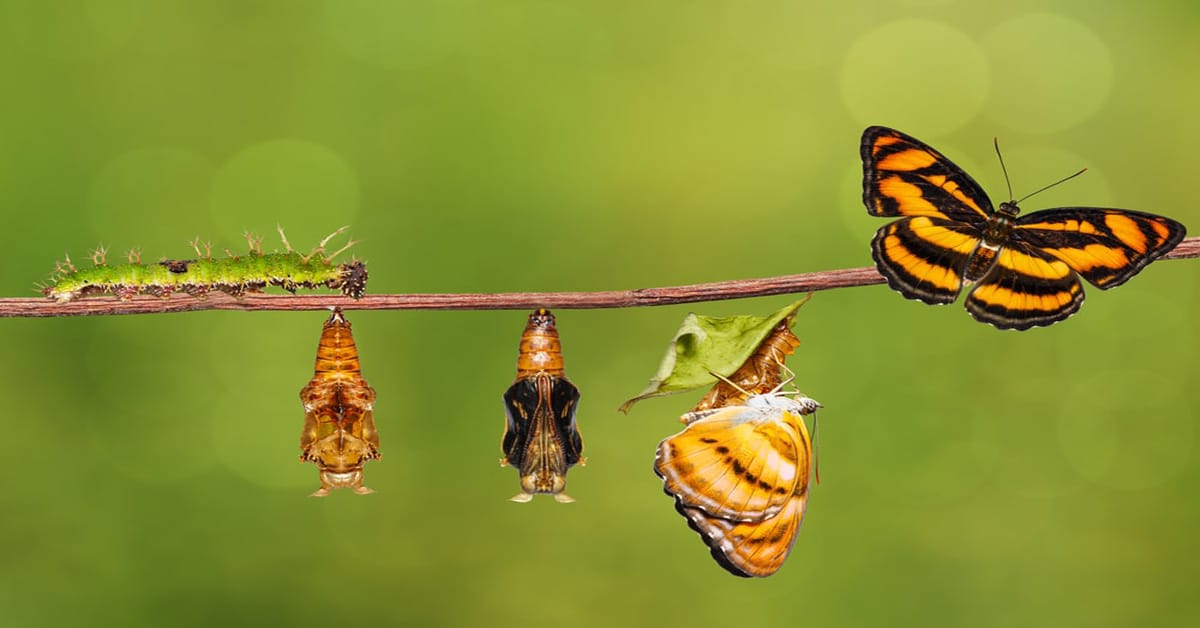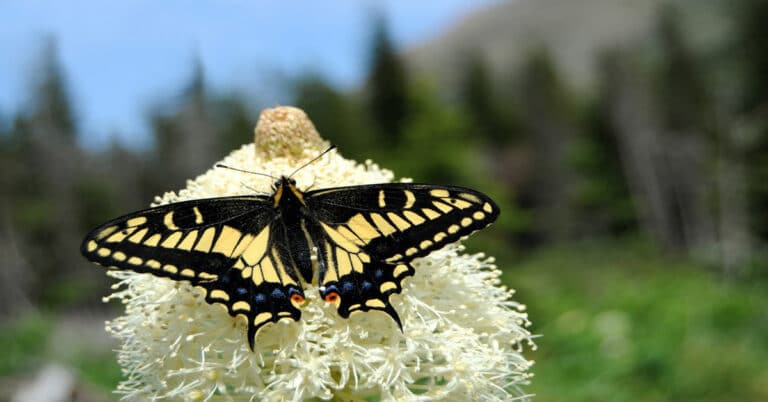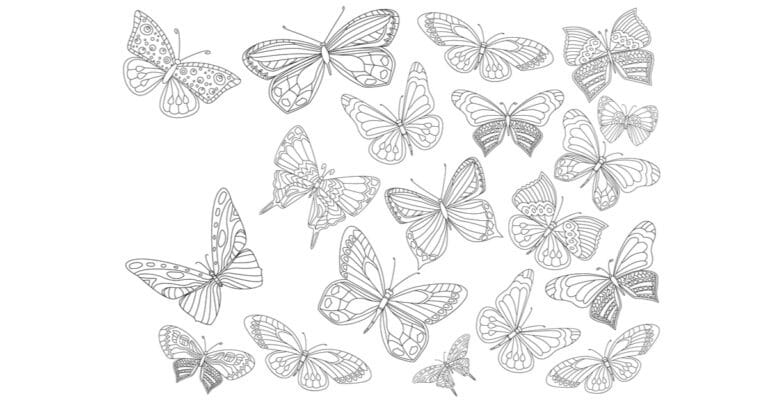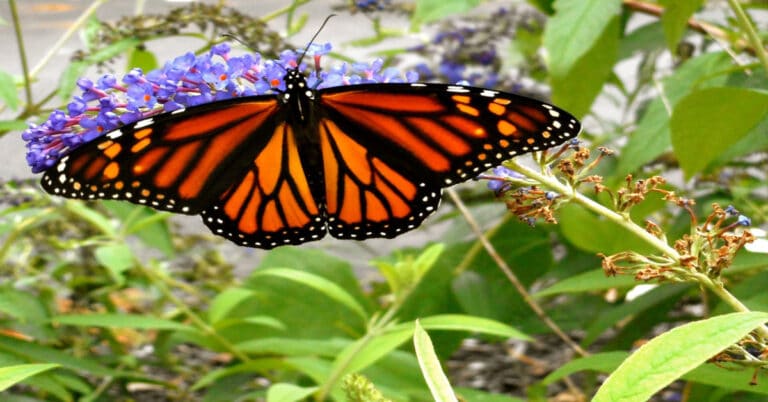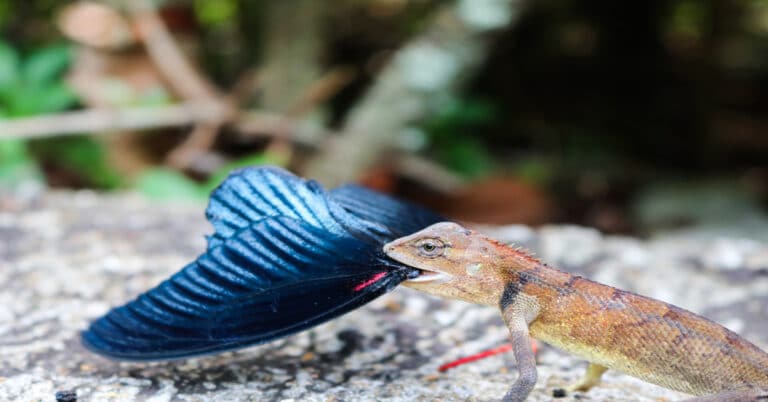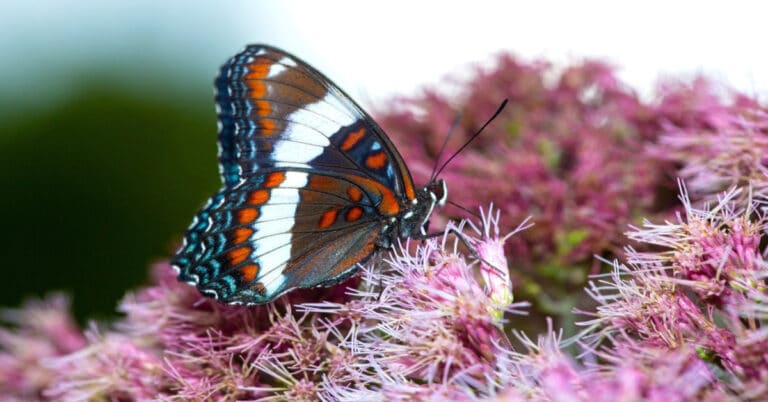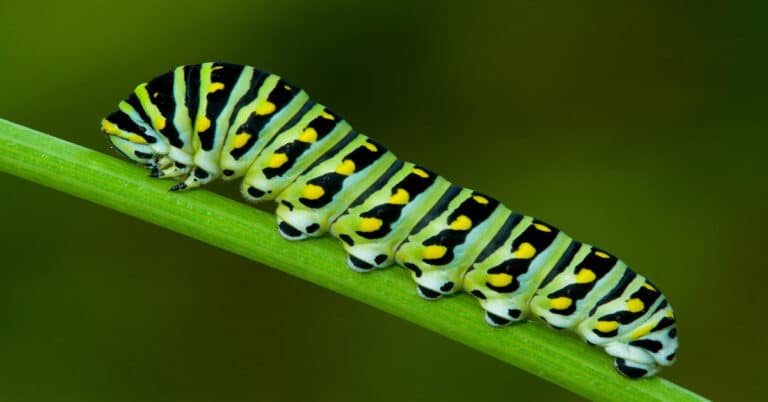Butterfly Life Cycle
Welcome to the magical world of butterflies, where vibrant colors and graceful movements make them one of nature’s most fascinating creatures. Have you ever wondered how these delicate beauties come to life? Join us as we delve into the captivating journey of a butterfly’s life cycle, from a tiny egg to a winged wonder.
In this article, we’ll explore the intricate details of each stage, from the careful selection of a host plant to the moment when a butterfly’s life cycle begins as it emerges from its chrysalis. Join us on a journey of discovery and unraveling the mysteries of the butterfly life cycle.
Butterfly Metamorphosis
Let’s explore a butterfly life cycle in detail, including all four stages of life. All butterflies have “complete metamorphosis.” To grow into an adult they go through 4 stages: egg, larva, pupa, and adult. Each stage has a different goal – for instance, caterpillars need to eat a lot, and adults need to reproduce. Depending on the type of butterfly, the life cycle of a butterfly may take anywhere from one month to a whole year. You can print out this Butterfly Life Cycle coloring page to follow along as we talk about the 4 stages.
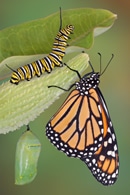
The First Stage: The Egg
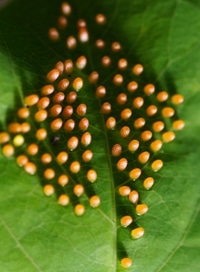
A butterfly starts life as a very small, round, oval or cylindrical egg. The coolest thing about butterfly eggs, especially monarch butterfly eggs, is that if you look close enough you can actually see the tiny caterpillar growing inside of it. Some butterfly eggs may be round, some oval and some may be ribbed while others may have other features. The egg shape depends on the type of butterfly that laid the egg.
Butterfly eggs are usually laid on the leaves of plants, so if you are actively searching for these very tiny eggs, you will have to take some time and examine quite a few leaves in order to find some.
Some butterflies are very specific about the type of plant they choose to lay their eggs on, while others are more flexible. This selection process is crucial, as the egg provides the caterpillar with the necessary nutrients and protection to grow and develop into a butterfly.
Once the egg is laid, it takes around 3-5 days for it to hatch. The timing of the butterfly life cycle may vary depending on the species of butterfly and the temperature and humidity of the environment. After the egg hatches, a tiny caterpillar emerges, ready to begin its journey of growth and transformation.
The Second Stage: The Larva (Caterpillar)
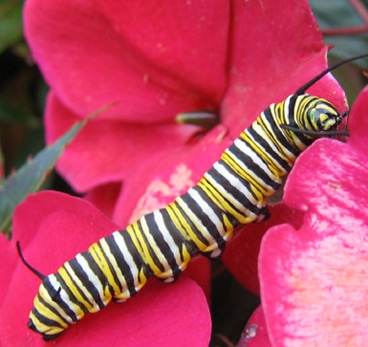
When the egg finally hatches, most of you would expect for a butterfly to emerge, right? Well, not exactly. In the butterfly’s life cycle, there are four stages and this is only the second stage. Butterfly larvae are actually what we call caterpillars. Caterpillars do not stay in this stage for very long and mostly, in this stage all they do is eat.
When the egg hatches, the caterpillar will start his work and eat the leaf they were born onto. This is really important because the mother butterfly needs to lay her eggs on the type of leaf the caterpillar will eat – each caterpillar type likes only certain types of leaves. Since they are tiny and can not travel to a new plant, the caterpillar needs to hatch on the kind of leaf it wants to eat.
Caterpillars need to eat and eat so they can grow quickly. When a caterpillar is born, they are extremely small. When they start eating, they instantly start growing and expanding. Their exoskeleton (skin) does not stretch or grow, so they grow by “molting” (shedding the outgrown skin) several times while it grows.
The appearance of butterfly caterpillars can vary greatly depending on the species, but they generally have a long, cylindrical body with a distinct head and several pairs of legs. They may also have additional appendages, such as prolegs or tentacles, that help them to move and interact with their environment.
One of the most interesting features of the butterfly life cycle at this stage is their ability to change color or pattern in response to their surroundings. Some caterpillars are brightly colored, with bold patterns or stripes that serve as a warning to predators that they are toxic or otherwise unpalatable. Other caterpillars are camouflaged to blend in with their surroundings, making them more difficult to spot.
Monarch Caterpillars
Monarch butterfly caterpillars are known for their unique appearance and behavior, which set them apart from other species of butterfly caterpillars. One of the most distinctive features of monarch caterpillars is their striped pattern, which features black, white, and yellow stripes along their body. They also have two pairs of black tentacles at both ends of their body, which are used to sense their environment.
In addition to their appearance, monarch caterpillars also have unique behaviors that help them to survive and thrive in their environment. One such behavior is their ability to consume milkweed plants, which are toxic to most other animals. Monarch caterpillars have evolved to tolerate the toxic compounds in milkweed, which helps protect them from predators.
Another unique behavior of monarch caterpillars is their tendency to form large clusters on milkweed plants. This behavior, known as “communal feeding,” allows the caterpillars to deter predators by appearing more numerous and intimidating.
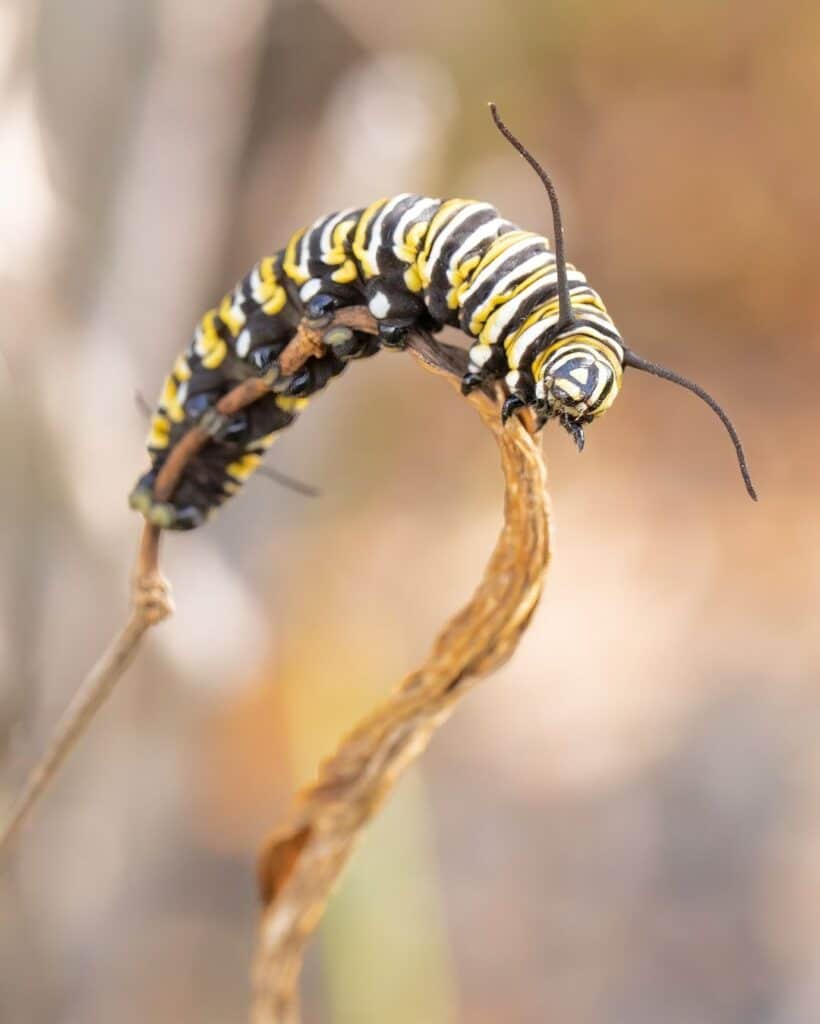
Swallowtail Caterpillars
One of the most notable features of swallowtail caterpillars is the presence of brightly colored spots or stripes on their bodies, which often resemble eyes or other patterns designed to intimidate predators.
Swallowtail butterflies at this stage of the butterfly life cycle also have a unique defensive behavior known as “osmeteria,” which involves the release of a strong-smelling, repellent chemical from a gland located behind their heads. This behavior helps to deter predators and protect the caterpillar from harm.
Another unique characteristic of swallowtail caterpillars is their feeding habits. While many other species of butterfly caterpillars feed exclusively on a single type of plant, swallowtail caterpillars are known to feed on a wide variety of plants, including citrus trees, dill, and parsley.
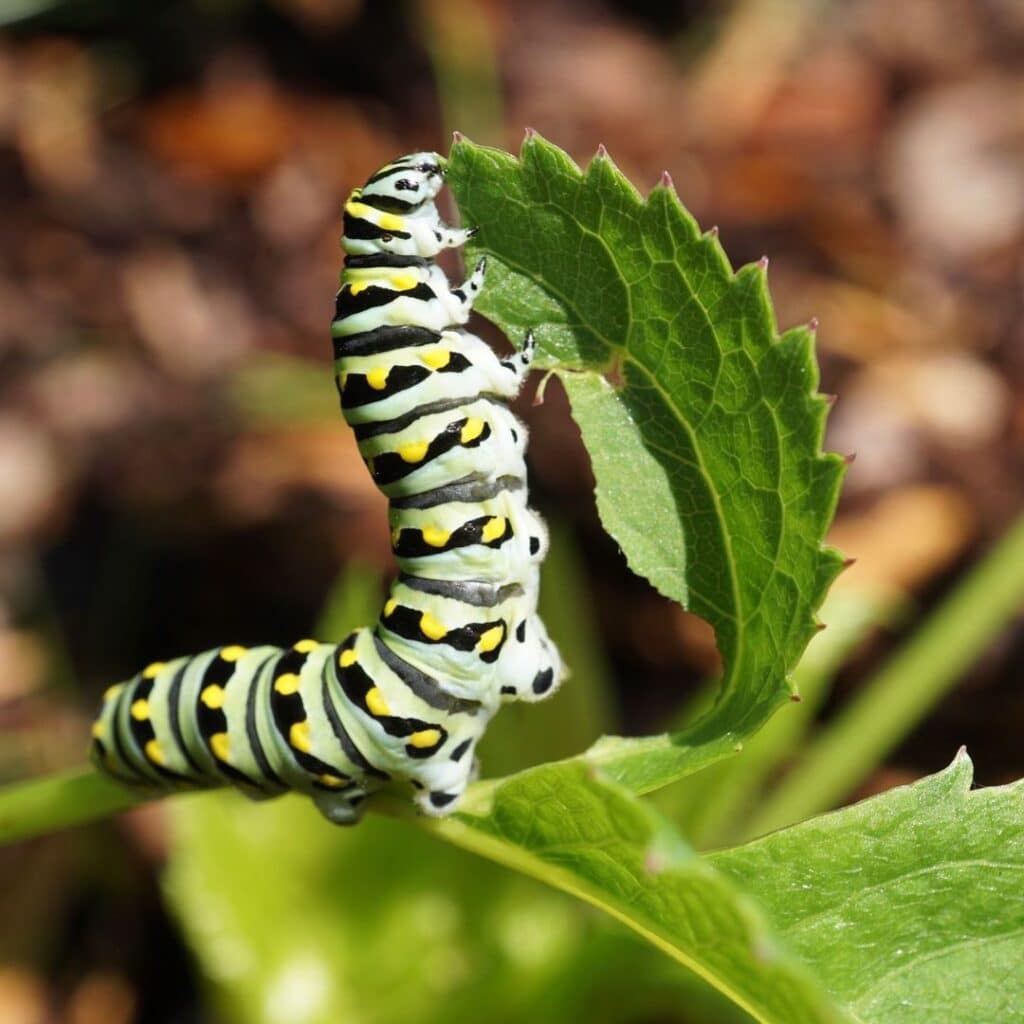
Gulf Fritillary Caterpillars
Gulf Fritillary Caterpillars have bright orange coloration, which serves as a warning signal to potential predators that they are toxic and should not be consumed. In addition to their striking appearance, Gulf Fritillary caterpillars also have unique feeding habits. Unlike many other species of butterfly caterpillars, which feed exclusively on the leaves of a single plant species, Gulf Fritillary caterpillars are known to feed on a wide variety of plants, including passion flowers and other vine species.
At this stage of the butterfly life cycle, another interesting characteristic of Gulf Fritillary caterpillars is their ability to form communal webs or nests, which they construct using silk and plant material. These communal webs serve as a means of protection against predators as well as a source of shelter and warmth for the caterpillars.
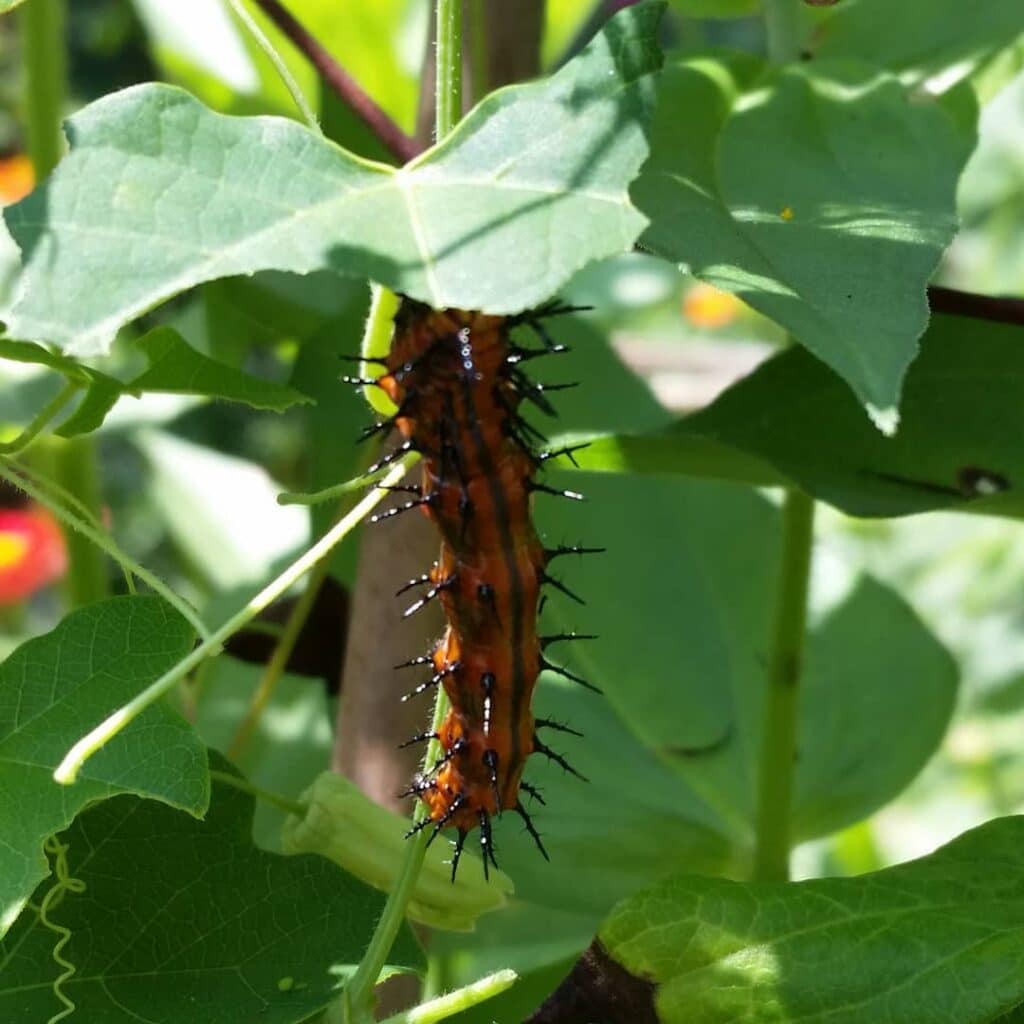
Black Swallowtail Caterpillars
Black swallowtail caterpillars have a striking appearance, which is marked by black and green stripes along their body. In addition to their distinctive appearance, they also have unique feeding habits. They are known to feed on a wide variety of plants, including members of the carrot family such as dill, parsley, and fennel. This makes them valuable species in many ecosystems, as they help to control the growth and spread of these plant species.
Another interesting characteristic of Black Swallowtail caterpillars is their ability to form a distinctive “saddle” shape when threatened, which involves curving their front and back segments upward to resemble a saddle. This behavior helps to deter potential predators and protect the caterpillar from harm.
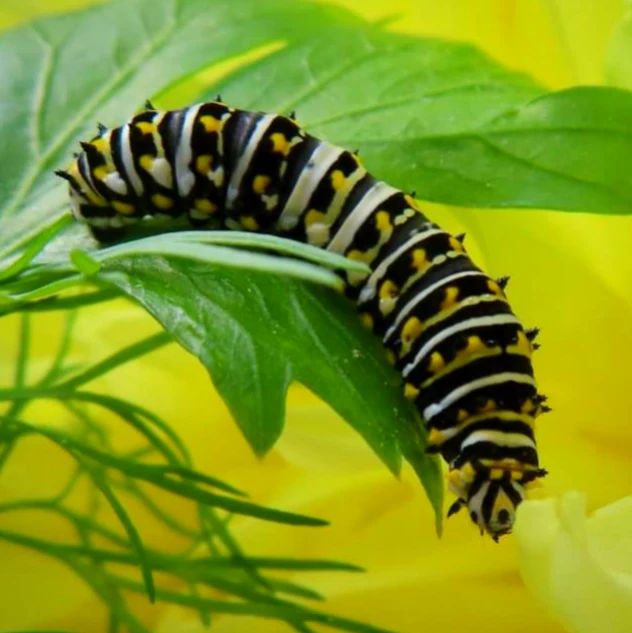
Zebra Longwing Caterpillars
Zebra Longwing caterpillars have a black-and-white striped appearance, which resembles the stripes of a zebra. They are known to feed on the leaves of several species of passionflower, which contain toxins that make them unpalatable to many potential predators. The caterpillars can sequester these toxins in their bodies, making them toxic and unappealing to predators.
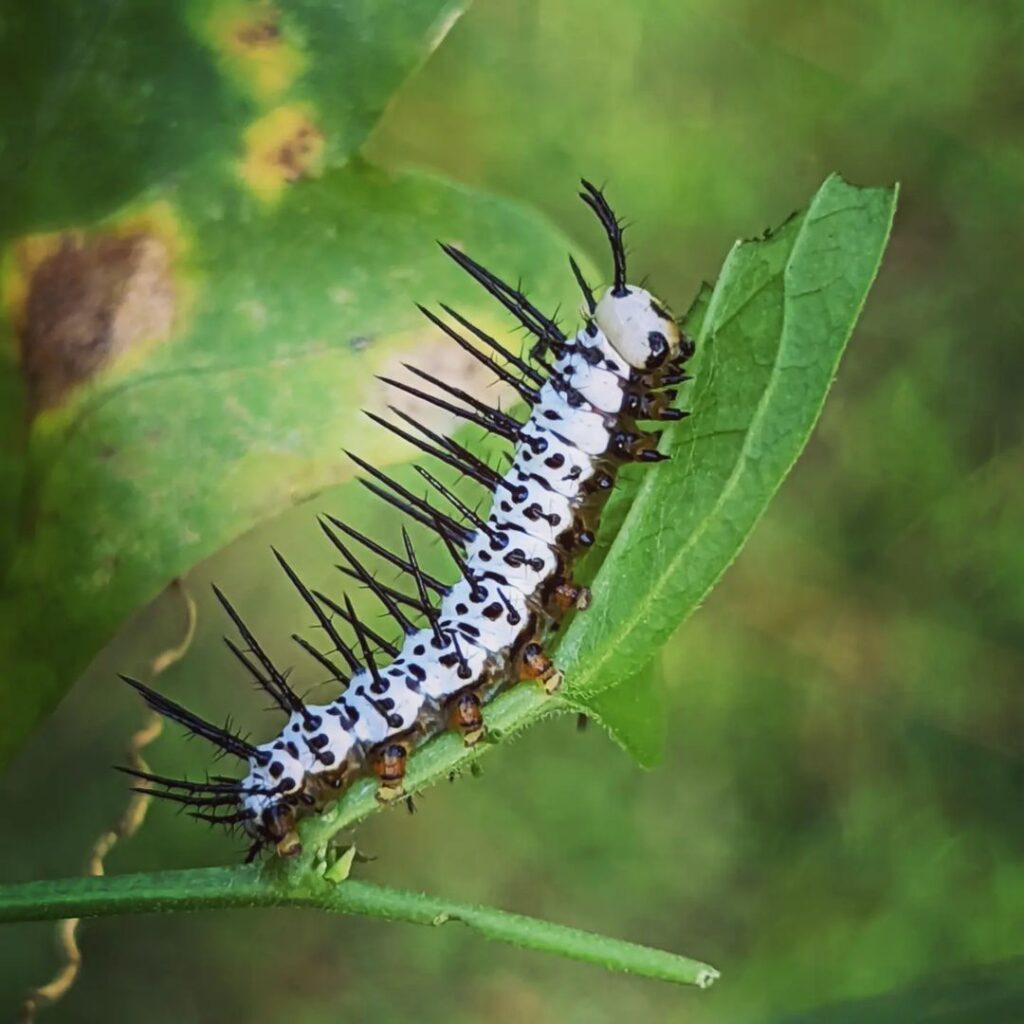
Painted Lady Caterpillars
Painted Lady caterpillars are known for their spiny appearance, which is covered in long, black spines. They are known to feed on a variety of host plants, including thistle, mallow, and nettle. Unlike many other butterflies at this stage of the butterfly life cycle, Painted Lady caterpillars can tolerate a wide range of plant toxins, which allows them to feed on a wider variety of plants than many other species.
They are known to aggregate in large numbers on host plants, which can cause significant damage to the plant if the caterpillars are not controlled. In addition, these groups of caterpillars will often spin communal nests or webs, which provide an additional layer of protection and insulation.
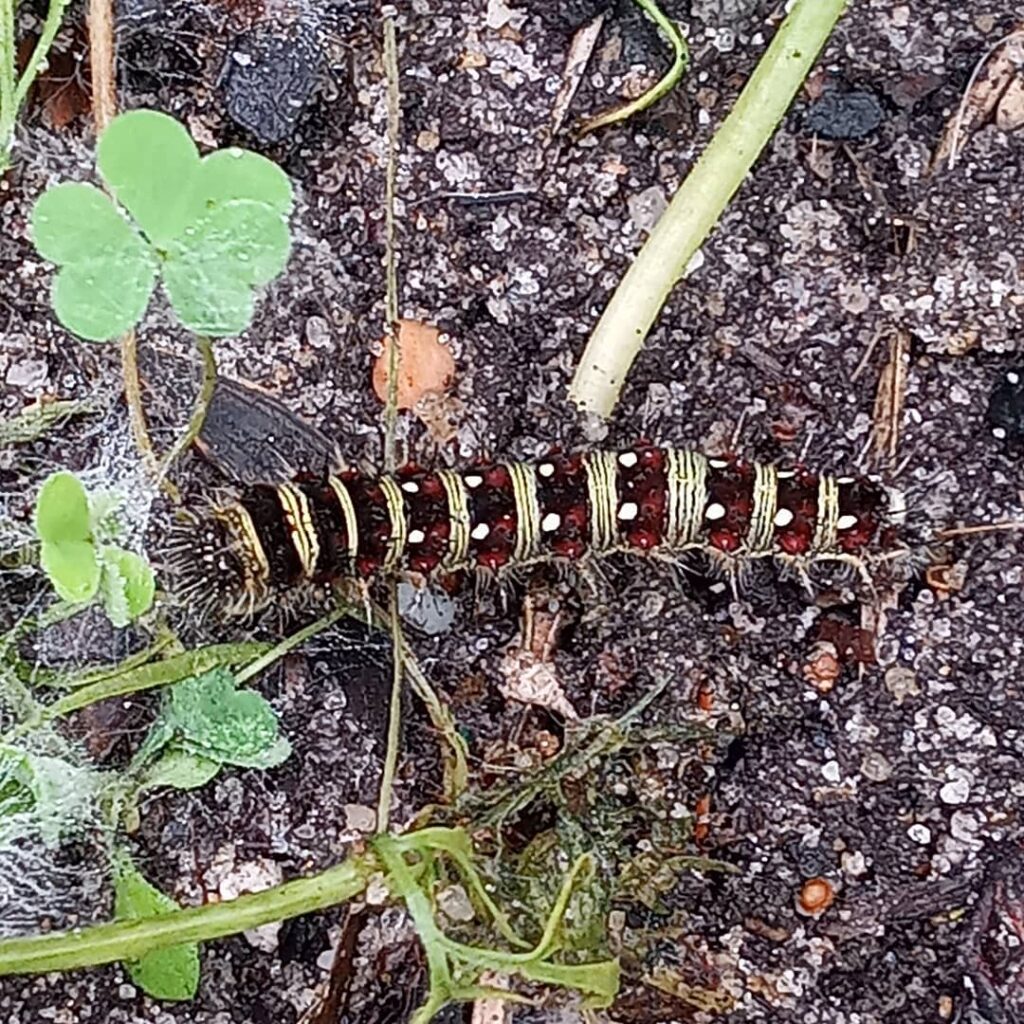
The Third Stage: Pupa (Chrysalis)
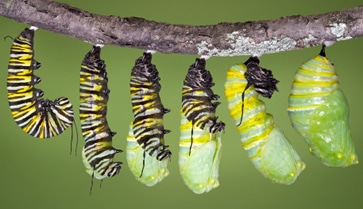
The pupa stage is one of the coolest stages of a butterfly’s life. As soon as a caterpillar is done growing and they have reached their full length/weight, they form themselves into a pupa, also known as a chrysalis. From the outside of the pupa, it looks as if the caterpillar may just be resting, but the inside is where all of the action is. Inside of the pupa, the caterpillar is rapidly changing
During the transformation process of the butterfly life cycle, the pupa will begin to take on the appearance of an adult butterfly. The wings will form and grow, taking on their distinctive shape and pattern. The body will become more slender and elongated, and the eyes and antennae will also begin to develop.
The length of time that a butterfly spends in the pupa stage of the butterfly life cycle can vary depending on a variety of factors, including temperature, humidity, and species. Some species may only spend a few days in the pupa stage, while others may spend several weeks or even months.
Once the transformation is complete, the pupa will split open and the adult butterfly will emerge. This process is often referred to as “eclosion.” At first, the butterfly will be damp and weak, but it will quickly begin to dry its wings and prepare for flight. This is how this stage of the butterfly life cycle ends.
The Fourth Stage: Adult Butterfly
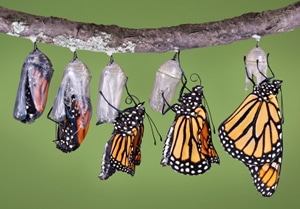
Finally, when the caterpillar has done all of its forming and changing inside the pupa, if you are lucky, you will get to see an adult butterfly emerge. When the butterfly first emerges from the chrysalis, both of the wings are going to be soft and folded against its body. This is because the butterfly had to fit all its new parts inside of the pupa.
When in the fourth and final stage of their lives, adult butterflies are constantly on the look out to reproduce and when a female lays their eggs on some leaves, the butterfly life cycle will start all over.
How Do Butterflies Reproduce?
From their courtship rituals to their mating habits, butterflies have developed a wide range of strategies to ensure their survival and the continuation of their species. Reproduction is how the butterfly life cycle starts.
Courtship
Before mating can occur, butterflies engage in a courtship ritual that can be highly elaborate and sophisticated. These rituals can involve complex displays of behavior, including the exchange of chemical signals, visual cues, and even physical contact.
Male butterflies are typically the ones that initiate the courtship process, using a variety of techniques to attract females. Some species use visual displays, such as colorful wing patterns or intricate dances, to catch the attention of potential mates. Other species rely on pheromones, which are chemical signals that can be detected by female butterflies from a distance.
Once a male has attracted a female, the two will engage in a series of behaviors that are designed to establish and reinforce their bond. This can include the exchange of pheromones and other chemical signals, as well as physical contacts such as wing touching and antennae tapping.
Mating
Once a male and female have established a connection through courtship, they will mate in order to produce offspring. Mating typically occurs when the male transfers his sperm to the female, usually through a specialized organ called a “clasper.”
The mating process can vary widely depending on the species of butterfly, with some engaging in quick, simple matings and others engaging in more complex rituals that can last for hours or even days.
After mating, the female butterfly will typically lay her eggs on the leaves or stems of a plant, where they will hatch into caterpillars and begin their own butterfly life cycle.
Reproductive Strategies
Butterflies have developed a wide range of reproductive strategies to ensure the survival of their species. Some species, for example, rely on large numbers of offspring to increase the chances that at least a few will survive to adulthood. Other species invest more heavily in individual offspring, producing fewer but more well-developed caterpillars that are better able to compete for resources.
How Can You See The Butterfly Life Cycle?
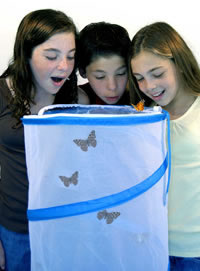
There are many different ways that you can catch this miracle happen right before your eyes, for instance, there are live butterfly kits that come with caterpillars so you can see this amazing transformation right in front of you!
These live butterfly kits are amazing for a science project or simply for children to learn all about the ever-changing caterpillar and the butterfly’s life cycle in general. One of the greatest things about these live butterfly kits is the fact that after the butterflies hatch out of their pupas, you can observe them for a little while and then let them go!
Letting your butterflies go is not only a satisfying experience but it is one that is very important to teach your children. Children have to learn that animals do not need to be locked up and while it is okay to observe them sometimes, it is always best to let nature take its course.
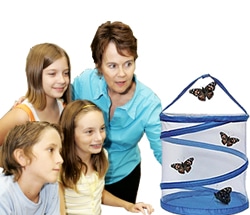
Now that you have learned all about the butterfly life cycle, why don’t you teach someone else? This amazing life cycle is a great lesson for anyone to learn and it is not only a lesson that involves an ever-changing insect, but it is one that we can apply to ourselves as well. For instance, when a child is feeling down on themselves, you can explain to them that not only do people change inside every day, but insects like the butterfly do too.
The butterfly life cycle is a great story to tell anyone and everyone and it is even better to observe it happen right in front of you. Live butterfly kits allow you to see for yourself the entire life cycle of this incredible creature and allows your children to learn more and more about these beautiful insects!
You can also find out about the dragonfly life cycle, frog life cycle and ladybug life cycle and more information across Learn About Nature.
Bottom Line – Butterfly Life Cycle
In conclusion, the butterfly life cycle is a remarkable journey of adaptation and survival. Each stage presents its own challenges and opportunities, and it’s truly amazing to witness the transformation that takes place.
Beyond their natural beauty, butterflies play a crucial role in the ecosystem, serving as pollinators and indicators of environmental health. By better understanding the butterfly life cycle, we can better appreciate their importance and work towards preserving their habitats and resources.
Butterfly Biology Links
| Butterfly Life Cycle Coloring Page | FREE butterfly life cycle coloring page for you to print out and color in! |
| Monarch Butterfly Life Cycle Coloring Page | FREE Monarch butterfly life cycle coloring page for you to print out and color in! |
| Berkeley’s Anise Swallowtails | Lots of pictures of the stages of the Anise Swallowtail butterfly life cycle with emphasis on caterpillars and raising them, but many butterfly pictures as well. One of the best written and documented butterfly rearing sites out there. Also fun to read!! |
| Captain’s European Butterfly Guide | Provides a series of pages with photos outlining the butterfly life cycle process from start to finish. |
| Monarch Butterfly Life Cycle Pictures | Great article with images about the life cycle of the monarch butterfly. Did you know they have 4 generations a year, and that the last one migrates up to 2,500 miles? |
| Monarch Butterfly Biology and Migration | A gateway to news, information, activities, and resources about the biology and conservation of this fascinating insect. |

Having discovered a fondness for insects while pursuing her degree in Biology, Randi Jones was quite bugged to know that people usually dismissed these little creatures as “creepy-crawlies”.

